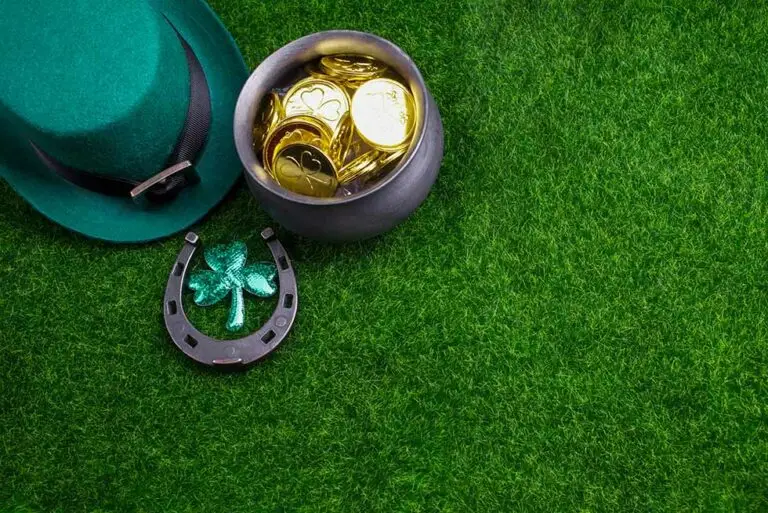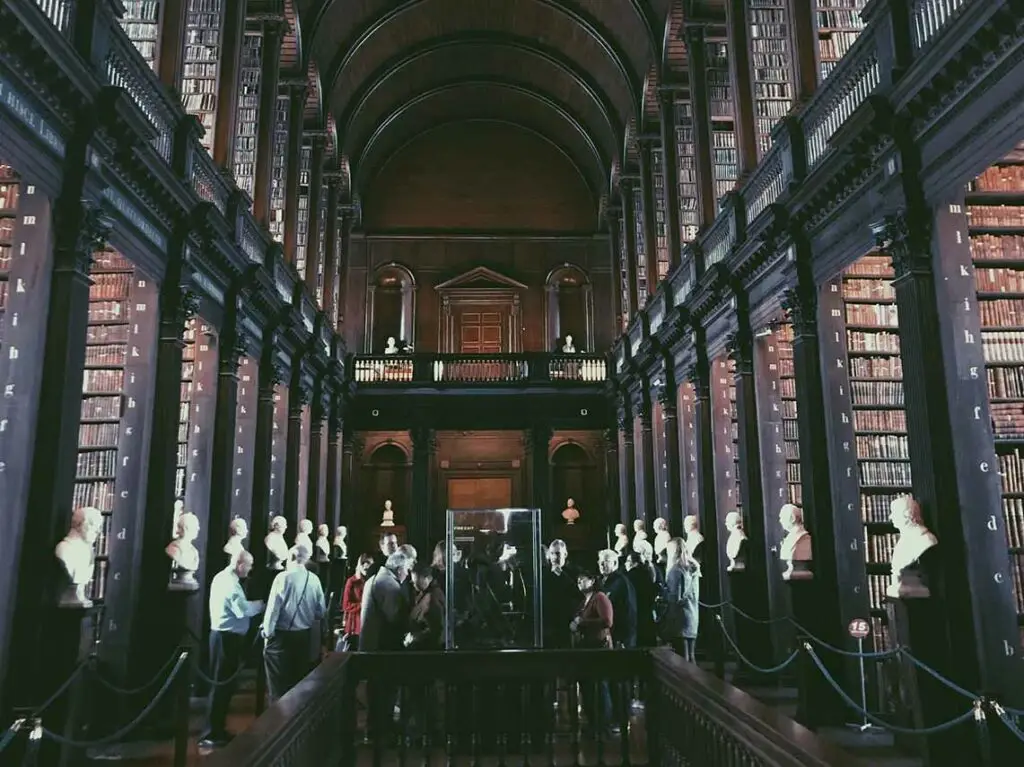Welcome to the land of leprechauns, banshees, and many more Celtic myths and legends that have been passed down through generations, captivating audiences with their eerie tales of magic and mystery!
Ireland is a land steeped in mythology, and today we’re diving into what we consider to be the top 5. Whether you’re a true believer or just love a good ghost story, these legends and myths are sure to give you goosebumps! So, grab a cup of tea, turn off the lights, and let’s get ready to explore the spookiest legends and myths of Ireland.
The Legend of the Leprechaun
We will all be familiar with Holywood depictions of Leprechauns over the years, but did you know that traditionally they are a type of fairy in Irish folklore? They are often portrayed as mischievous and tricky, but also as protectors of their treasure.
The creatures are typically described as small, wizened old men, no taller than a few feet in height. They are often depicted wearing green clothing, a hat, and a pair of shoes. They are known for their mischievous and trickster behavior, and are often said to be very elusive and hard to catch.
Leprechauns are an important part of Irish folklore and culture. They are often associated with good luck and wealth and are said to bring prosperity to those who catch them. They are also seen as protectors of Irish traditions and customs. Leprechauns are also a common feature in Irish literature and art and continue to be a popular symbol of Irish culture around the world.
Famous references of leprechauns in literature and media: Leprechauns have been featured in a number of famous works of literature and media, including the book and film series “The Leprechaun” and the popular Irish folk song “Leprechauns and Fairies.” They also have been depicted in various St. Patrick’s Day parades and events. Leprechauns are also commonly used as a symbol of Ireland in various commercial products and advertising, such as Irish whiskey, beer, and other souvenirs.
The Myth of the Banshee
Banshees, also known as “bean sidhe” in Gaelic, are female spirits in Irish folklore who are believed to foretell the death of a family member by wailing or keening. They are often associated with the Otherworld and are believed to be connected to the land and their ancestors. They are believed to have a strong connection to the living and the dead and were considered to be messengers of fate.
Descriptions of the typical appearance and behavior of banshees are typically described as ethereal and ghostly figures, with long flowing hair and a ghostly white or gray appearance. They are often depicted as being able to change their appearance, taking on different forms, from that of a beautiful young woman to a terrifying hag. They are known for their mournful wailing or keening, which is said to be a sign of impending death.
The Banshee is an important figure in Irish folklore and culture. She is often seen as a powerful and mysterious force and is associated with death and the afterlife. In Ireland, it was believed that hearing the wail of a banshee was a sign of impending death, and many people would take great care to avoid encountering a banshee. They are also associated with the land and are thought to be connected to the ancestors, and as such, they were respected as powerful and mysterious figures.
The creatures have been featured in a number of famous works of literature and media, including the book and film series “The Banshee” and the popular Irish folktales “The Wail of the Banshee” and “The Scream of the Banshee.” They are also commonly depicted in various Irish films, TV shows, and novels. Banshees have also been referenced in various songs and poetry such as W.B Yeats’ poem “The Stolen Child” and the traditional Irish song “The Banshee.”
The Legend of the Clurichaun
similar to leprechauns, Clurichauns are a type of fairy in Irish folklore. They are known to be mischievous and enjoy drinking and are often depicted as being the “nighttime” counterpart of leprechauns, while leprechauns are said to be active during the day. They are believed to live in the same type of underground homes as leprechauns.
They are typically described as small, wizened old men, similar to leprechauns, but with an affinity for alcohol and more rambunctious behavior. They are often depicted as wearing green clothing and a hat and are known for their love of drinking and partying. They are also said to be mischievous and tricky, and enjoy playing pranks on humans.
Clurichauns are not as well-known as leprechauns, and therefore there are not many famous references of clurichauns in literature and media. However, they are sometimes featured in Irish folktales and legends and are occasionally depicted in Irish-themed art and literature. They have also been referenced in some Irish folk songs, and in some Irish-themed video games, TV shows, and movies.
The Myth of the Pooka
These are shapeshifting creatures often depicted as a horse or a rabbit, but can also take on the form of a dog, cat, goat, or even a human. They are said to have supernatural powers and can be both benevolent and malevolent. They are believed to live in the Otherworld and appear in the mortal world at night.
Pookas are typically described as shapeshifting creatures that can take on various forms, most commonly that of a horse or rabbit. They are often depicted as having supernatural powers and can be both benevolent and malevolent. They are known for tricking and playing pranks on humans and are said to be fond of leading travelers astray. They are also associated with the night and the wild and are believed to be connected to the land and their ancestors.
The Legend of the Selkie
Mythological creatures in both Irish and Scottish folklore are said to be able to transform from seals into humans. They are often associated with the sea and are believed to live in the ocean, but come to the shore to shed their skin and take on human form. They are also known for their singing and are often portrayed as sad and lonely creatures.
The human form of a selkie is somewhat similar to the Mermaid myth in that it is often described as being ethereal and otherworldly. They are known for their singing, which is said to be hauntingly beautiful and can be heard from far away. They are also known for their sadness, as they are said to be longing for their home in the sea.
They are seen as a symbol of the power of nature and the sea and are often associated with the cyclical nature of life and death. They are also associated with the theme of longing and longing for home, which is a common theme in many of these cultures.
Speak to our Tour Specialists About Visiting These Locations
For those interested in learning more about these legends and myths, a tour of Ireland that focuses on visiting the locations where these stories are said to have originated is a great way to gain a deeper understanding of Irish and Scottish culture and history.
Such a tour could include stops at places like the Burren, the Ring of Kerry, and the Cliffs of Moher. For more information and advice contact our tour planners today.




















